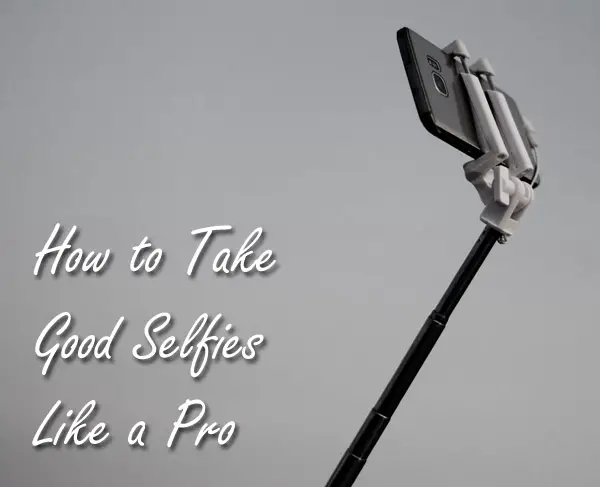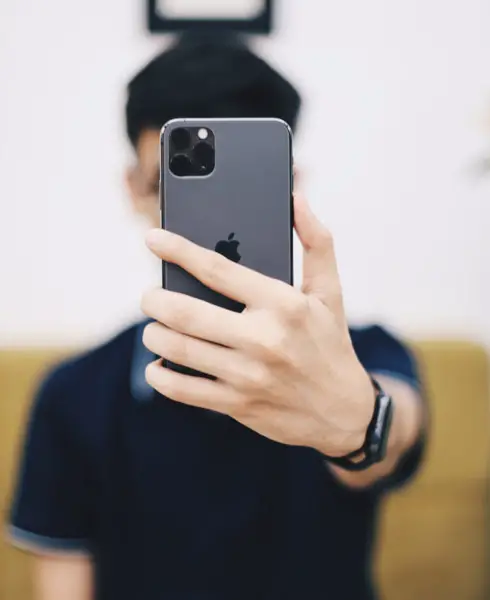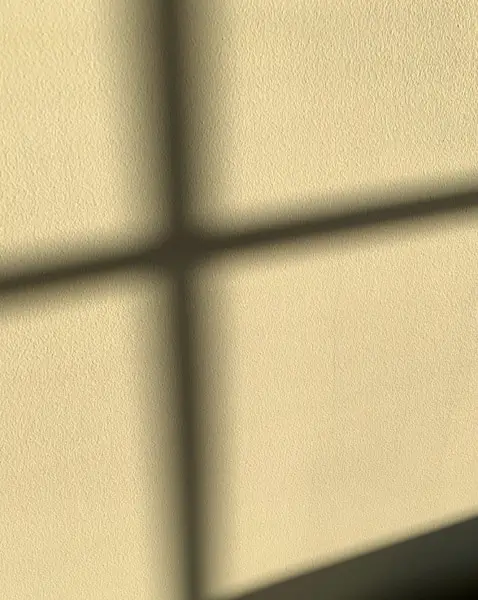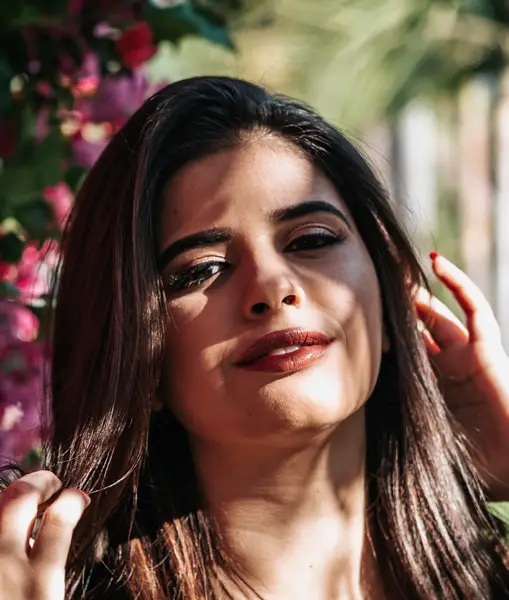Ever snap a selfie, only to delete it because you didn’t like how it turned out? We’ve all experienced this dilemma. Taking good selfies can feel like an art form that’s tough to master.

You know the struggle – finding good lighting so your skin doesn’t look too shiny or dull; figuring out which angle best highlights those killer cheekbones; and deciding whether a smile or duck-lips face suits this moment better.
The perfect selfie is more than just a quick click on your phone camera. It involves understanding natural light, knowing the right poses, using photo editing tools effectively and of course – getting comfortable with that front-facing camera lens! So why not let this guide help turn every snap into potential profile picture material?
To up your social media game, keep reading. Discover how to construct a powerful online persona and generate material that resonates with your viewers.
Mastering the Art of Selfies
Taking a good selfie is an art. With practice and understanding, one can become a master of the art of taking good selfies.
Understanding Camera Angles for the Perfect Selfie
Different camera angles can change your look in selfies. High angle shots tend to slim down your face while low angles emphasize facial features.
Hold your phone at arm’s length above eye level and tilt it slightly downward for a flattering perspective. This simple trick alone improved my selfie game by leaps.

The ‘selfie mode’ on most smartphones automatically flips images so they appear as you see yourself in a mirror – useful when using text or signs in photos. Make sure you use this feature wisely to create perfect photo compositions.
Choosing the Right Lens for Selfies
The camera lens you use can make a big difference. Wide-angle lenses, often found on phone cameras, distort facial features when held too close. A telephoto lens or portrait mode reduces this distortion and gives more flattering selfies.
Selfie sticks help create distance between you and your phone – reducing wide-angle distortion.
If using a DSLR or mirrorless camera for your selfie, aim for 50mm to 85mm focal length lenses that mimic how our eyes perceive faces in reality.
Soft Lighting vs. Harsh Shadows in Selfies
The play of light and shadow can make or break your selfie game. So, let’s explore the effects of soft lighting and harsh shadows on selfies.
Achieving Flattering Lighting for Selfies
To capture a great selfie, good lighting is key. Soft natural light works best as it smooths out facial features and hides any imperfections like dark circles under eyes or skin blemishes.
However, getting this perfect photo isn’t always easy. It involves knowing when to snap that picture; early morning or late afternoon often provides the most flattering light conditions known as ‘golden hour’. If you’re indoors, try standing near a window where there’s plenty of diffused daylight pouring in – but avoid direct sunlight which could lead to overexposure and washed-out photos.

If you don’t have access to natural light source (like during night time), use artificial sources such as a ring light. This handy tool emits evenly distributed illumination around your face creating an effect similar to golden-hour glow without casting harsh shadows – making it ideal for taking selfies at home after sunset.
There are also several editing apps available that can help adjust the brightness levels post-shoot if needed. Adobe Photoshop Fix, for example, offers options like exposure correction along with skin smoothing tools that come in handy when working with less-than-ideal lighting conditions.
Tackling Harsh Shadows
In contrast to soft lights’ forgiving nature lies their counterpoint: harsh shadows which might seem tricky at first but can add depth and drama if used correctly – think about those high-fashion editorial shots.

Your phone camera settings can help here. Try utilizing HDR (High Dynamic Range) mode which takes numerous pics with various exposures, then merges them to generate a balanced image that shows both light and dark areas in great detail.
Another trick is positioning yourself in relation to your primary light source; if it’s coming from above, try tilting your head up slightly so the shadows fall under your chin instead of on prominent facial features like nose or cheekbones – this subtle trick can completely change how you look in photos.
Using Selfie Sticks and Other Photo Accessories
It’s no secret that the right tools can elevate your selfie game. Among these, a standout is the trusty selfie stick. Not just for tourists anymore, this photo accessory offers some surprising benefits.
A well-designed selfie stick lets you capture selfies from various angles without straining your arm or distorting the image. It also enables wider shots – ideal when you’re taking group selfies to make sure everyone fits in the frame. Plus, it keeps camera shake to a minimum ensuring clear and sharp photos every time.
Taking Group Selfies with a Selfie Stick
If there’s one thing more fun than capturing great individual selfies, it’s snapping memorable group pictures. However, getting everyone into the shot can be tricky. That’s where a good quality selfie stick comes handy.
You don’t need long arms or awkward posing anymore – simply extend your selfie stick. But remember not to go overboard; too wide an angle might cause distortion at photo edges (we’re looking at you fish-eye lens.). So play around until you find that sweet spot.
The result? Everyone gets included without compromising on picture quality.
The Benefits of Additional Photo Accessories
Moving beyond our trusty friend – the selfie stick – we encounter other helpful accessories like tripods and remote shutter buttons. Phone tripods help stabilize your phone, while remote shutter buttons let you click without touching the device.
These photo accessories can give you a more professional finish and provide creative options for your selfie game. Don’t be hesitant to explore different possibilities.
Making the Most of Portrait Mode
Portrait mode has transformed the selfie game by giving your camera phone photos a professional touch. Let’s delve into how to harness its power for creating standout selfies.
How to Use Portrait Mode for a Face Selfie
The magic of portrait mode lies in focusing on your facial features while blurring out the background, producing an effect known as ‘bokeh. This can elevate any face selfie from average to stunning. To start using it, open up your camera app and switch over to portrait or depth effect mode. Position yourself so that you’re within arm’s length of the lens – this will help get rid of any unwanted distortion.
If you’ve got an iPhone with dual cameras like most recent models do, make sure there is enough distance between you and your background; about two meters should suffice. Apple recommends this distance because it allows their algorithmic software to create maximum bokeh effects efficiently.
You’ll notice real-time changes on screen when adjusting angles or light source. Aim for good lighting conditions – natural light works best but avoid direct sunlight which can be harsh and cast unflattering shadows on skin. Early morning or late afternoon offers softer lighting which enhances features rather than highlighting flaws such as dark circles under eyes.
Avoid making photo editing decisions while taking selfies; save them for post-processing where subtle tricks can give amazing results without affecting original image quality too much.
To add some fun into proceedings, try different selfie poses – maybe even channel Kim Kardashian if you feel adventurous.
Familiarize yourself with editing tools available in apps. You can adjust highlights, shadows, or even remove tiny dot-like blemishes with precision.
To complete the process, remember to direct your attention to the camera lens instead of focusing on the display. Sure, it might feel strange at first, but trust me – this small change can make your selfies look way more natural and engaging. This is especially true if you’re snapping pics in selfie mode on a Samsung Galaxy.
The Impact of Genuine Smiles in Selfies
What’s the secret sauce to a great selfie? You might be surprised, but it’s not just about finding your perfect angle or having impeccable lighting. A genuine smile can truly make your selfies stand out and create a connection with those who view them.
A study published by Psychology Today found that people perceive photos featuring genuine smiles as more appealing and trustworthy. The reason behind this is simple: real emotions are contagious. Seeing someone genuinely smiling can create an emotional connection, inspiring us to feel good too.
Perfecting the “Smize” in Selfies
You’ve probably heard of smizing before – coined by supermodel Tyra Banks on America’s Next Top Model; it means ‘smiling with your eyes’. And let me tell you, mastering this subtle trick will take your selfie game up several notches.

In fact, there was an interesting experiment conducted at Western University which revealed that when people maintain eye contact while looking at pictures (yes including selfies), they tend to find them much more engaging. This goes hand-in-hand with why Kim Kardashian’s signature squinch-and-smize combo works so well.
To practice smizing yourself try thinking about something joyful or amusing – something that makes you naturally happy from within. But remember – avoid going overboard lest you end up squinting rather than smizing.
This takes us back to our main point: being authentic matters. If you don’t feel comfortable making a duck-lips face or posing like Kim Kardashian, then don’t. A natural smile that reaches your eyes will always beat a forced pout.
So next time you’re about to snap a selfie, remember this: let the light coming from within shine through and make sure it reflects in your eyes.
You can also experiment with different camera settings on your phone to enhance those genuine smiles even more. Many smartphones these days come equipped with special features for selfies such as Samsung Galaxy Beauty Face mode which can help highlight your facial features without looking too artificial.
Take advantage of every chance that comes your way – it could lead to possibilities you never imagined. It could open doors you never even knew existed.
FAQs
How do you hold your phone while taking a selfie?
Hold your phone at eye level, slightly tilted down. This angle is most flattering and helps avoid double chins.
How do you take good selfies on iPhone?
To snap stellar selfies on an iPhone, use Portrait Mode for bokeh effects and tap the screen to focus. Good lighting makes all the difference too.
How do you not look bad in selfies?
Avoid looking bad in selfies by using natural light, choosing a high camera angle, smiling genuinely, and finding what poses work best for you.
How do you take a full body selfie?
Taking a full-body selfie requires distance. Use mirrors or set up your smartphone further away with self-timer or remote control apps to get yourself entirely in frame.
Conclusion
Mastering the art of selfies isn’t an overnight task. But now, you know how to play with angles for that perfect shot and harness natural light for a mood-setting selfie.
You’ve also learned about using selfie sticks and other photo accessories to enhance your photos, as well as taking advantage of portrait mode on smartphones.
A genuine smile can make all the difference in your selfies, connecting with viewers on an emotional level. Remember this when trying out new poses or experimenting with lighting conditions.
Gaining knowledge of these strategies can provide you with an edge in producing gorgeous self-portraits. Keep practicing because ‘How to Take Good Selfies’ is an ongoing learning process! And who knows? Your next click could be your best yet! Click the following link to learn the things to do if you hate taking pictures of yourself.








